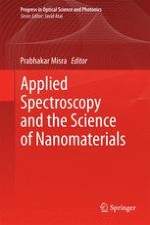2015 | OriginalPaper | Buchkapitel
Applications of Fluorescence Anisotropy in Understanding Protein Conformational Disorder and Aggregation
verfasst von : Neha Jain, Samrat Mukhopadhyay
Erschienen in: Applied Spectroscopy and the Science of Nanomaterials
Verlag: Springer Singapore
Aktivieren Sie unsere intelligente Suche, um passende Fachinhalte oder Patente zu finden.
Wählen Sie Textabschnitte aus um mit Künstlicher Intelligenz passenden Patente zu finden. powered by
Markieren Sie Textabschnitte, um KI-gestützt weitere passende Inhalte zu finden. powered by
